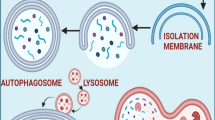Abstract
Raf kinase inhibitor protein (RKIP) plays a pivotal role in several intracellular signaling cascades and has been implicated as a metastasis suppressor in multiple cancer cells including prostate cancer cells, but the mechanism is not very clear. In this study, we investigated the effect of RKIP on cell proliferation, migration and invasion using human prostate cancer PC-3M cells as a model system. Our results indicate that RKIP does not effect cell proliferation in PC-3M cells, but inhibits both cell migration and cell invasion. In association with this inhibitory effect, RKIP down-regulates matrix metalloproteinases (MMP-2 and MMP-9), cathepsin B and urinary plasminogen activator (uPA). Also RKIP has the ability to regulate the expression of E-cadherin. But ectopic expression of RKIP does not affect the level of the Snail protein. As it has been indicated here, RKIP inhibits the migration and invasion ability of human prostate cancer cells through regulation of the extracellular matrix. These findings provide new mechanistic insight how RKIP suppresses metastasis in vitro.
Similar content being viewed by others
Abbreviations
- MMP:
-
matrix metalloproteinase
- RKIP:
-
Raf Kinase Inhibitory Protein
- uPA:
-
urinary plasminogen activator
References
Xinzhou H., Xu W., Wei Z. 2007. Studies on the biological function of Raf kinase inhibitor protein (RKIP). Chin. Bull. Life Sci. 19, 31–36.
Fu Z., Smith P.C., Zhang L., Rubin M.A., Dunn R.L., Yao Z., Keller E.T. 2003. Effects of raf kinase inhibitor protein expression on suppression of prostate cancer metastasis. J. Natl. Cancer Inst. 95, 878–889.
Schuierer M.M., Bataille F., Hagan S., Kolch W., Bosserhoff A.K. 2004. Reduction in Raf kinase inhibitor protein expression is associated with increased Rasextracellular signal-regulated kinase signaling in melanoma cell lines. Cancer Res. 64, 5186–5192.
Hagan S., Al-Mulla F., Mallon E., Oien K., Ferrier R., Gusterson B., Curto Garcia J.J., Kolch W. 2005. Reduction of Raf-1 kinase inhibitor protein expression correlates with breast cancer metastasis. Clin. Cancer Res. 11, 7392–7397.
Al-Mulla F., Hagan S., Behbehani A.I., Bitar M.S., George S.S., Going J.J., Garcia J.J.C., Scott L., Fyfe N., Murray G.I. 2006. Raf kinase inhibitor protein expression in a survival analysis of colorectal cancer patients. J. Clinical Oncol. 24, 5672–5679.
Lee H.C., Tian B., Sedivy J.M., Wands J.R., Kim M. 2006. Loss of Raf kinase inhibitor protein promotes cell proliferation and migration of human hepatoma cells. Gastroenterology. 131, 1208–1217.
Li H.Z., Gao Y., Zhao X.L., Liu Y.X., Sun B.C., Yang J., Yao Z. 2009. Effects of raf kinase inhibitor protein expression on metastasis and progression of human breast cancer. Mol. Cancer Res. 7, 832–840.
Fu Z., Kitagawa Y., Shen R., Shah R., Mehra R., Rhodes D., Keller P.J., Mizokami A., Dunn R., Chinnaiyan A.M. 2006. Metastasis suppressor gene Raf kinase inhibitor protein (RKIP) is a novel prognostic marker in prostate cancer. Prostate. 66, 248–256.
Zhu S., Mc Henry K.T., Lane W.S., Fenteany G. 2005. A chemical inhibitor reveals the role of Raf kinase inhibitor protein in cell migration. Chem. Biol. 12, 981–991.
Mc Henry K.T., Montesano R., Zhu S., Beshir A.B., Tang H.H., Yeung K.C., Fenteany G. 2008. Raf kinase inhibitor protein positively regulates cell-substratum adhesion while negatively regulating cell-cell adhesion. J. Cell. Biochem. 103, 972–985.
Wen Xu, Panpan Ye, Zhaochun Li, Junting Shi, Wei Wang, Ke Yao. 2010. Endostar, a recently introduced recombinant human endostatin, inhibits proliferation and migration through regulating growth factors, adhesion factors and inflammatory mediators in choroid-retinal endothelial cells. Mol. Biol. (Moscow). 44, 585–590.
Yeung K.C., Rose D.W., Dhillon A.S., Yaros D., Gustafsson M., Chatterjee D., McFerran B., Wyche J., Kolch W., Sedivy J.M. 2001. Raf kinase inhibitor protein interacts with NF-{kappa}B-inducing kinase and TAK1 and inhibits NF-{kappa}B activation. Mol. Cell. Biol. 21, 7207–7217.
Beach S., Tang H., Park S., Dhillon A.S., Keller E.T., Kolch W., Yeung K.C. 2007. Snail is a repressor of RKIP transcription in metastatic prostate cancer cells. Oncogene. 27, 2243–2248.
Barberà M.J., Puig I., Dominguez D., Julien-Grille S., Guaita-Esteruelas S., Peiró S., Baulida J., Francí C., Dedhar S., Larue L. 2004. Regulation of Snail transcription during epithelial to mesenchymal transition of tumor cells. Oncogene. 23, 7345–7354.
Julien S., Puig I., Caretti E., Bonaventure J., Nelles L., Van Roy F., Dargemont C., de Herreros A.G., Bellacosa A., Larue L. 2007. Activation of NF-κB by Akt upregulates Snail expression and induces epithelium mesenchyme transition. Oncogene. 26, 7445–7456.
Wu K., Bonavida B. 2009. The activated NF-kappaB-Snail-RKIP circuitry in cancer regulates both the metastatic cascade and resistance to apoptosis by cytotoxic drugs. Crit. Rev. Immunol. 29, 241–254.
Crowe D.L., Shuler C.F. 1999. Regulation of tumor cell invasion by extracellular matrix. Histol. Histopathol. 14, 665–671.
Yamada S., Pokutta S., Drees F., Weis W.I., Nelson W.J. 2005. Deconstructing the cadherin-catenin-actin complex. Cell. 123, 889–901.
Borghi N., Lowndes M., Maruthamuthu V., Gardel M.L., Nelson W.J. 2010. Regulation of cell motile behavior by crosstalk between cadherin-and integrin-mediated adhesions. Proc. Natl. Acad. Sci. U.S.A. 107, 13324–13329.
Nagafuchi A., Takeichi M. 1988. Cell binding function of E-cadherin is regulated by the cytoplasmic domain. EMBO J. 7, 3679–3684.
Takeichi M. 1993. Cadherins in cancer: Implications for invasion and metastasis. Curr. Opin. Cell Biol. 5, 806–811.
Christofori G., Semb H. 1999. The role of the celladhesion molecule E-cadherin as a tumour-suppressor gene. Trends Biochem. Sci. 24, 73–76.
Veeravalli K.K., Chetty C., Ponnala S., Gondi C.S., Lakka S.S., Fassett D., Klopfenstein J.D., Dinh D.H., Gujrati M., Rao J.S. 2010. MMP-9, uPAR and cathepsin B silencing downregulate integrins in human glioma xenograft cells in vitro and in vivo in nude mice. PloS One. 5, e11583.
Author information
Authors and Affiliations
Corresponding author
Additional information
The article is published in the original.
Rights and permissions
About this article
Cite this article
Xinzhou, H., Ning, Y., Ou, W. et al. RKIP inhibits the migration and invasion of human prostate cancer PC-3M cells through regulation of extracellular matrix. Mol Biol 45, 921–928 (2011). https://doi.org/10.1134/S0026893311060197
Received:
Accepted:
Published:
Issue Date:
DOI: https://doi.org/10.1134/S0026893311060197




